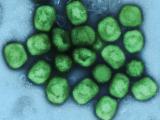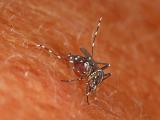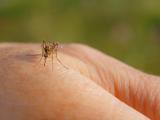Dec 16, 2010
UN to launch probe of source of Haiti's cholera outbreak
The United Nations (UN) is calling for an international scientific panel to try to determine the origin of the cholera outbreak in Haiti, according to a UN News story yesterday. The agency plans "to find the best experts to be in a panel, completely independent . . . [and] have the best investigation on the source of the outbreak," said Alain Le Roy, UN under-secretary for peacekeeping operations. UN Secretary-General Ban Ki-moon is talking with interested stakeholders, including the UN's World Health Organization, and may release more details tomorrow, according to the story. Media reports and some experts have claimed that UN peacekeepers from Nepal are the source of the outbreak, and that water from their camp contaminated a tributary of the Artibonite River, along which many cases have been reported. However, Le Roy said, "There is no consensus among scientists on this issue." In an update yesterday, the Pan American Health
Organization (PAHO) said the number of Haitian cholera cases has reached 109,196, with 54,595 hospitalizations and 2,405 deaths, for a case-fatality rate of 2.2%.
Dec 15 UN News story
Dec 15 PAHA update
AHRQ publishes tools for hospital preparedness exercises
The Agency for Healthcare Research and Quality (AHRQ) of the US Department of Health and Human Services today released three documents replete with resources to help hospitals prepare for a health emergency. The first document, "Hospital Preparedness Exercises Atlas of Resources and Tools," is designed to give emergency planners tools to "help them plan for, design and develop, conduct, evaluate, and improve hospital preparedness exercises," according to its introduction. The tools and resources in the document, the authors write, can also help healthcare institutions meet federal funding requirements and accreditation standards. The AHRQ also released a guidebook and handbook to accompany the preparedness atlas.
AHRQ hospital preparedness resources page
Study: S aureus targeting of humans relates to use of hemoglobin
Researchers suggest that the reason Staphylococcus aureus primarily attacks humans and not other animals has to do with an enhanced ability to use human hemoglobin as a source of iron. Writing in Cell Host & Microbe, scientists from Vanderbilt and two other universities note that bacteria need iron to multiply. They say S aureus steals the iron it needs from host hemoglobin during invasive infections, binding to the compound, extracting heme, and breaking it down to release free iron. "We demonstrate an enhanced ability of S aureus to bind hemoglobin as compared to other mammals," and this results in an improved ability to acquire iron, their report says. They found that mice genetically engineered to express human hemoglobin were more susceptible to systemic S aureus infection. According to a New York Times report on the research, the scientists said
the bacterium evolved to target specific regions of the human hemoglobin molecule, and they suspect that people who are resistant to the pathogen have genetic variations that make those regions less vulnerable to attack. Other researchers said the findings answer many questions about S aureus and open up new avenues for studying it, the story said.
Dec 16 Cell Host & Microbe article summary
Dec 16 Times story
Scientists say West Nile virus in US didn't come from Israel
Researchers studying the phylogeography of West Nile virus (WNV) found that the strain now endemic in temperate zones of North America did not originate from Israel as previously believed. The researchers say that WNV has diverged into multiple lineages across the globe; they studied lineage 1, which shows evidence of the same amino acid having evolved independently on multiple occasions. In Africa, WNV exists in an endemic cycle, while in Europe it is reintroduced regularly from Africa. Genotypes in India and Australia, however, indicated the virus was successfully introduced only once in each region. As to the North American strain, the authors conclude, "Contrary to previous suggestions, an isolate from the epidemic in Israel in 1998 was not the direct progenitor of the [North American] epidemic; rather both epidemics originated from the same, but unknown location."
Dec 15 J Virol abstract

















